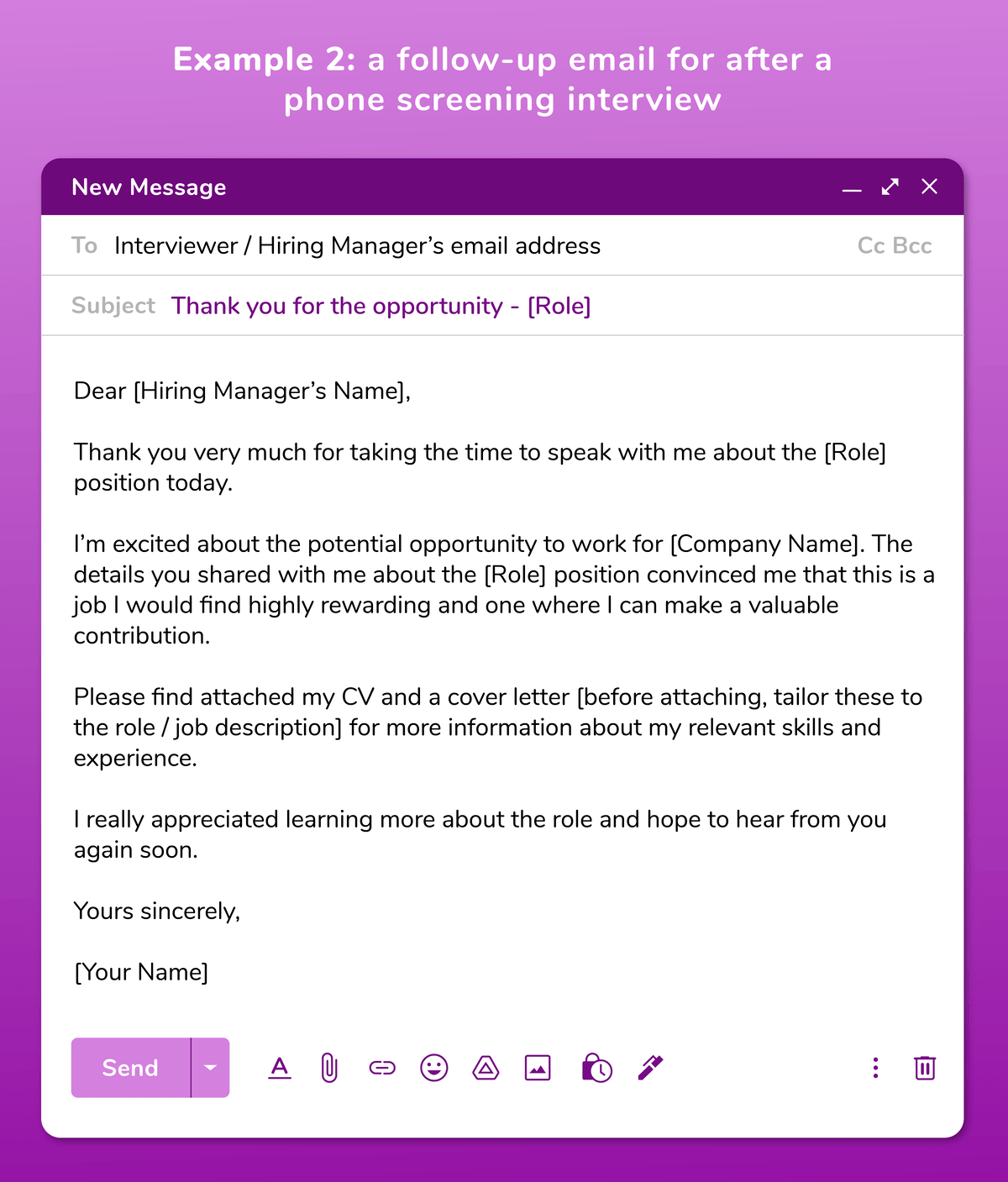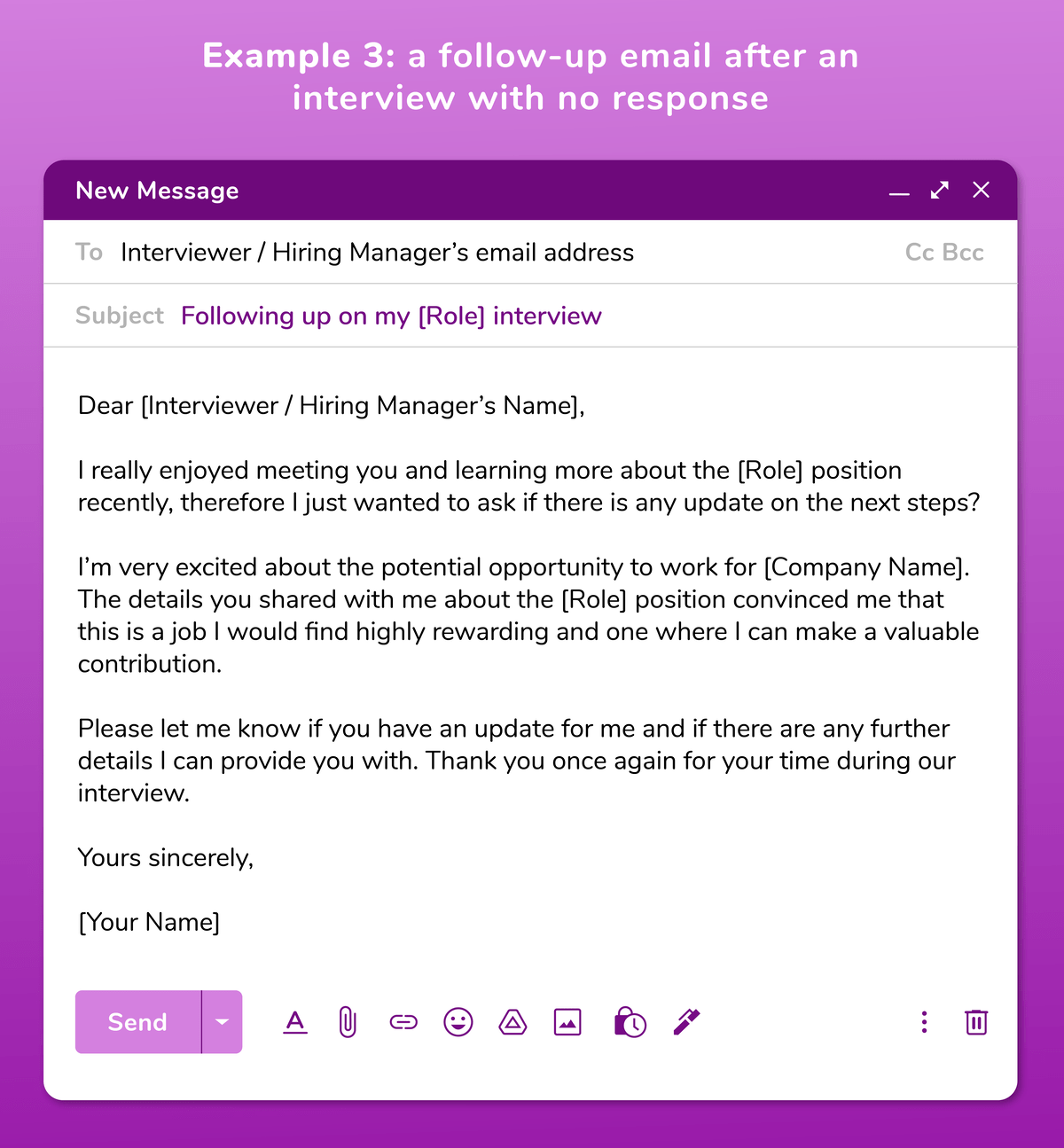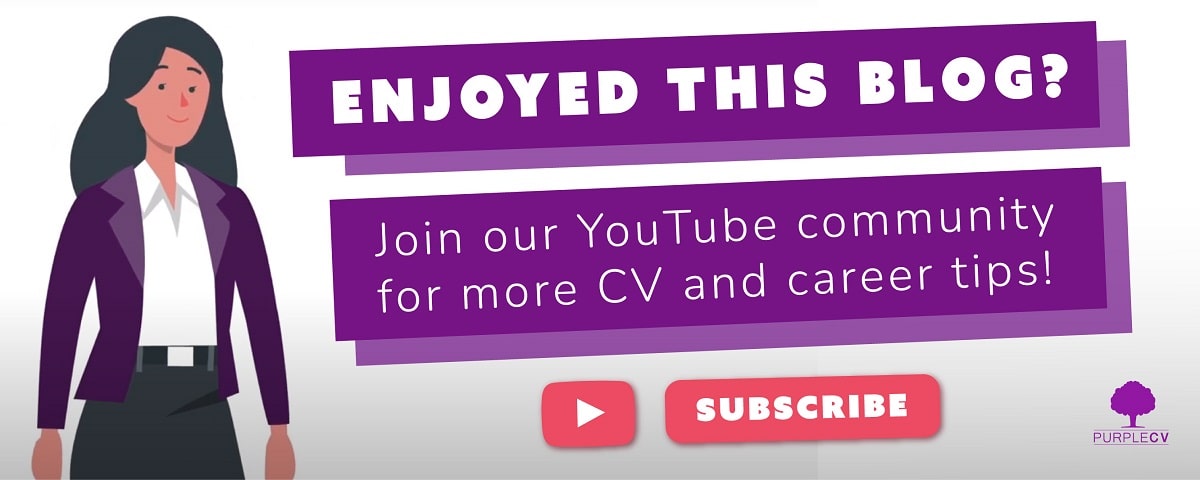Can You Take Notes Into An Interview? Our Guide
They can be long, often lasting 60 minutes, so beforehand any nervous candidate might be wondering – can you take... Read more...

If you’re not sure how to write a follow-up email after an interview, let us share our top tips and some handy templates to get you started.
So you’ve made it through the interrogation and perhaps a presentation… the hard part’s over, you’ve done everything you can and now it’s just a waiting game, right?
Not quite, there’s still one thing left to do before you can sit back and relax – and that’s to write a follow-up email after the interview.
Sending a follow-up email after interview sessions is a great opportunity to stand out from the crowd and make a positive impression. It could turn out to be an important part of the application process.
Following up is a big sign of a good interview, for you and from the employer’s perspective.
It’s also best to email rather than call – a phone call demands attention when the hiring manager may be busy, whereas they can reply to an email in their own time.
Read on for our guide on how to write a follow-up email after a job interview that will show you in a great light. We also share some handy interview follow-up email templates.
As a general rule, hiring managers and recruiters like to see proactivity and courtesy from their candidates during the interview process. That’s where the interview follow-up emails come in.
In 2019, the executive managing editor of Business Insider created a Twitter storm after writing an article saying she would not hire anyone who didn’t send a thank you note after their interview.
The comments were full of hiring managers saying they agreed with this follow-up emails argument. However, many job applicants don’t send a follow-up email after interview sessions.
According to CareerBuilder, 57% of candidates don’t send thank you notes after interviewing. This means the majority of candidates are passing up a quick, easy chance to outline their continued interest in the role during the hiring process.
Doing so after the first interview could put you ahead of your peers and push your name to the front of the queue.
So, when should you send a follow-up email after the job interview? Ideally on the same day, but no later than 24 hours after. Emailing later than that might make you look a little bit disorganised and it suggests you’d be slow to respond to emails at work.
Here’s how to write a follow-up email after an interview – it only needs to be two or three concise paragraphs.
It should be brief and to the point, but also clearly tailored to specific conversations you had during the interview:
See Example 1 below for an interview follow-up template you can use.
If you had several interviewers, your best bet is to send separate emails to each one (if you have, or can find, their email addresses). You never know who’ll have the decisive say on the outcome of your job interviews!
If your interview for the role was a phone or video call, it’s still a good idea to follow up even though you haven’t met in person yet.
You can use the same structure as above, when you’re writing a follow-up email after an interview call – unless it was a screening interview.
Screening interviews are when employers reach out to you, to briefly discuss an opportunity. Alternatively, it’s a step in the process to decide whether to invite you to the next more formal interview.
If they are the ones who first got in touch with you, reassure them that you are interested in the role by sending a follow-up email after this phone interview screening call.
After all, if you have similar experience to another candidate, but the other one seems more interested in the role, then you could lose out.
Here’s our guidance for how to write a follow-up email after an interview call used for screening, with the key difference in italics. The Example 2 template is also below:
Don’t forget that your CV and cover letter should be tailored to the role.
Many employers end an interview by letting you know when you can expect to hear back about any next steps. It’s not uncommon for this deadline to come and go without a word, however. This is because (amongst plenty of other reasons):
That’s why you need to send a follow-up email after interview processes when you’re still receiving radio silence. If it’s the former scenario, writing to them will reiterate your interest in the role. If it’s the latter scenario, finally getting a reply will at least bring you some clarity and closure.
We know the idea of sending a follow-up email after an interview might seem like you’re pestering them, let alone a second one, but if you’re both polite and professional, it won’t sound like you’re criticising them for dragging their feet.
Also, don’t assume that just because you haven’t heard back, you’ve been unsuccessful. And if they haven’t picked you, then it’s just good practice to stay in touch anyway to maintain your professional network.
This is how to write a follow-up email after an interview with no response, with the key difference highlighted again and the Example 3 template also below:
You should wait until after their given timeframe for getting in touch has passed, then wait another two working days. The only other reason why you would contact them before their deadline is if you’ve received another job offer.
If so, you should let them know you’re received an offer. But you can also say you’re still open to their original job, if they’re interested in you and want to make a counter offer.
If the interviewer didn’t give you a timeframe, then you should wait 10-15 business days, or one to two weeks, before sending a follow-up email after an interview with no response, as a general rule.
When thinking about how to write a follow-up email after an interview, don’t forget to include an informative subject line and address the email recipient correctly.
Be succinct and courteous, while reconfirming your interest in the open position.
Always remember that not following up could put you at a disadvantage behind any other candidates who have done this. It’s another way to give yourself a better chance of securing a new role and ending your job search.
Below you’ll also find some handy interview follow-up email templates.
If you have any further queries about how to write a follow-up email after an interview, or about writing a CV and cover letter, please don’t hesitate to get in touch.




We value your privacy! Please take a moment to customise your cookie preferences. By clicking 'Submit' you agree to the use of cookies as described below: